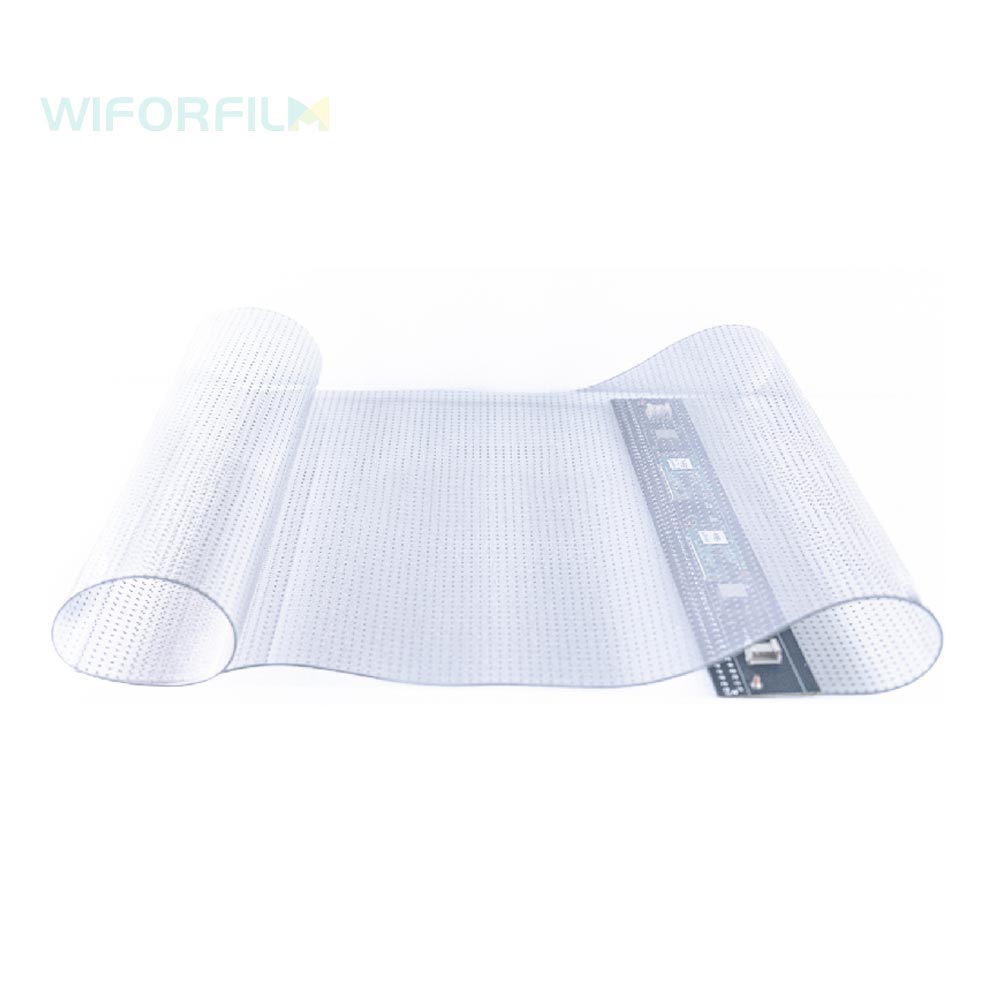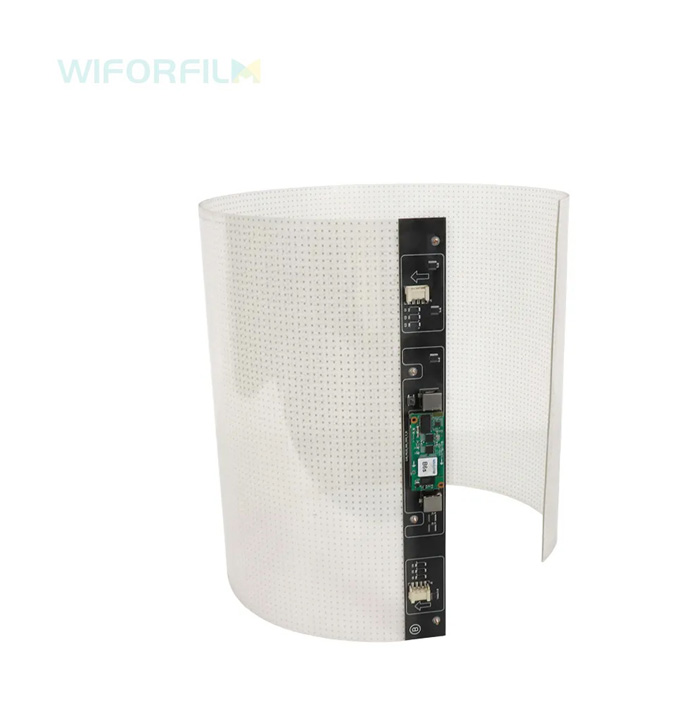- What Is a Transparent LED Screen
- How Do Transparent LED Screen Work
- Key Features of Transparent LED Screen
- Benefits of Using Transparent LED Screen
- Types of Transparent LED Screen
- Lifespan of Transparent LED Display
- Applications of Transparent LED Screen
- Comparison Between Transparent LED Screen and Traditional LED Screen
- How to Choose the Right Transparent LED Screen for Your Needs
- Installation Process for Transparent LED Screen
- Maintenance and Cleaning of Transparent LED Screen
- Parameter of Transparent LED Screen
- Transparent LED Screen Price
- Customization Options for Transparent LED Screen
What Is a Transparent LED Screen
LED transparent screen is an advanced display technology that combines high brightness and transparency, with a light transmittance of over 95%. It allows viewers to see the content displayed on the screen while still being able to see the objects behind it. The LED transparent screen utilize independently developed Mini-LED devices and PET transparent flexible materials, eliminating the need for steel structures, making them an ideal choice for applications such as retail storefronts, stage backdrops, and building facades.How Do Transparent LED Screen Work
The working principle of led screen involves using a grid of light-emitting diodes (LEDs) embedded in a transparent substrate, such as PET. Controlled by a NovaStar multimedia player and app, the LEDs emit light to create images or videos while allowing light to pass through the spaces between them, maintaining transparency. This design enables the screen to display content while offering a see-through effect. The led screen technology balances brightness, resolution, and transparency to achieve seamless integration with the surrounding environment.Key Features of Transparent LED Screen
High Transparency: Up to 95%, ensuring clear visibility behind the screen.Lightweight and Thin Design: just 2.5mm and weighing as little as 5kg per square meter
Easy to install:Installation is as simple as lightly adhering the transparent LED screen to any glass or transparent surface and connecting the power signal.
High Brightness: Ideal for both indoor and semi-outdoor use.
Customizable Sizes and Shapes: Tailored to various installation needs.
Benefits of Using Transparent LED Screen
Types of Transparent LED Screen
LED Screen of Glass /windows: Installed on existing glass.Stand-alone Screen: Independent structures.
Curved Screen: For unique architectural designs.
Lifespan of Transparent LED Display
The transparent LED display have the potential to operate for up to 100,000 hours, equivalent to over 11 years of use.Applications of Transparent LED Screen
Comparison Between Transparent LED Screen and Traditional LED Screen
| Feature | Transparent LED Screen | Traditional LED Screen |
|---|---|---|
| Transparency | High | None |
| Weight | Lightweight | Heavy |
| Aesthetics | Modern and sleek | Standard |
How to Choose the Right Transparent LED Screen for Your Needs
The first step in choosing the right LED transparent screen is to determine its installation location. The installation environment plays a key role in deciding the type of screen you need.
Indoor Installation: Retail Stores and Shopping Centers
For indoor installations, such as retail stores or shopping malls, standard-sized LED transparent screens work well. These screens are often installed on glass walls or within store windows. They provide high-definition images while maintaining transparency, allowing people to see outside through the screen.
Outdoor Installation: Building Facades
For outdoor installations, high brightness is essential to combat direct sunlight, so you will need an outdoor LED transparent screen. These screens are typically mounted on building facades and display clear advertisements visible from a distance. Outdoor screens require higher durability and weather resistance.
Large Installations: Media Facades
If you plan to cover large areas, such as building facades or media towers, ultra-high transparency media mesh is a great option. These LED transparent screens come in various models suitable for different purposes, including daytime and nighttime viewing. They are ideal for creating large-format dynamic visual effects visible from afar.
Freestanding Displays
If your screen needs to stand on the ground, consider transparent LED posters. These displays are highly customizable and can even be double-sided to offer visual effects on both sides. They are perfect for entrances, exhibitions, or any space requiring a freestanding display.
Custom Shapes for Creative Designs
For designers working on creative projects or unique architectural structures, LED transparent screens can be fully customized. They can fit any shape or size, making them perfect for projects that require creativity.
How Much Brightness Does the Screen Need?
-
Indoor Brightness Requirements
For indoor use, such as in retail stores or malls, a brightness of about 1000 nits is usually sufficient. This ensures the screen is clearly visible without obscuring the surrounding environment. However, if the screen faces the street or is placed behind glass windows, higher brightness (around 4500 nits) may be needed to ensure the screen remains bright and clear even when viewed from the outside during the day. -
Outdoor Brightness Requirements
Outdoor transparent LED panels, especially those exposed to direct sunlight, need higher brightness. For outdoor screens, at least 8000 nits is required to ensure clear visibility in bright sunlight. On the other hand, if your screen is for nighttime use, lower brightness levels (around 1000 nits) are usually sufficient.
What Type of Content Will You Display?
First, consider the type of content you plan to display. If you want to show high-definition videos or detailed images, you will need a transparent LED panel with a smaller pixel pitch for higher resolution. On the other hand, if the content is simple (e.g., basic color changes, animations, or text), a larger pixel pitch may suffice.
How Far Will the Audience Be?
The viewing distance also plays a crucial role in determining the appropriate resolution. The closer the viewer is to the screen, the smaller the pixel pitch needs to be. For viewing distances less than 5 meters, a pixel pitch of 3mm to 6mm is ideal. For medium distances (up to 10 meters), a pixel pitch between 6mm and 10mm works well. If the viewer is more than 50 meters away, a larger pixel pitch (between 15mm and 20mm) is sufficient. Larger pixel pitch screens are usually less expensive.
What Is Your Budget?
Your budget will affect your decision. Transparent LED screen prices vary, with models that have smaller pixel pitches or higher brightness typically being more expensive.
Installation Process for Transparent LED Screen
The installation of the LED screen does not require additional steel structures and does not damage the original interior design.It only needs to be applied to the glass for quick installation, achieving a simple and fast application.Installation for LED screen:
1、Clean the glass where the screen will be installed (the glass surface should be free of dust and water).
2、Determine the installation location for the screen.
3、Peel off the centrifugal film on the surface of the screen panel and install it in the correct position on the glass. Press with appropriate force by hand to ensure proper adhesion to the glass.
4、Arrange the power and data cables and secure the power box.
5、Illuminate and test to complete the installation.
Maintenance and Cleaning of Transparent LED Screen
Parameter of Transparent LED Screen
| Module size (mm) | 1000*400mm、250x1000mm、250x1200mm | Peak power | 600w/㎡ |
| LED light | REE1515 | Average power | 200w/㎡ |
| Pixel composition | R1G1B1 | Work environment |
Temperature -20-55 Humidity10-90% |
| Pixel spacing (mm) | 3mm,5mm,6mm,8mm,10mm,15mm,20mm | Weight | 1.3kg |
| Module pixel | 160*64=10240 | Thickness | 2.5mm |
| Pixel/㎡ | 25600 | Drive mode | static state |
| Brightness | 2000/4000 | Control system | Nova/Colorlight |
| Permeability | 85%~95% | Typical value of life | 100000H |
| Angle of view ° | 160 | Grayscale level | 16bit |
| input voltage | AC110-240V50/60Hz | Refresh rate | 3840Hz |










